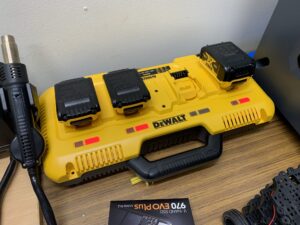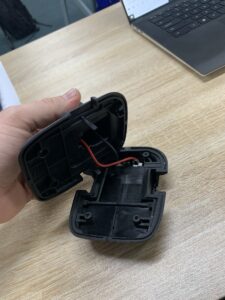For years, power has always been something we have constantly been seeking to improve. Most robots and other remote/portable applications utilise LiPo batteries. While flexible and providing lots of power in a small package, LiPo batteries do have a lot of concerning characteristics. In particular, they are quite prone to overheating and catching fire, as well as being very delicate and not capable of taking significant knocks or impacts. Back in 2017 in Nagoya, Japan, we say a prime example of this when one of the University/Major robots suffered a catastrophic failure of the LiPo battery, causing significant smoke and an evacuation of the centre.

For us, LiPo batteries involve fire-proof bags, long charge times with expensive chargers that balance the voltage of each of the cells, and expensive costs of replacing the batteries as they age or in some cases, puff up and become unsafe to use. When using LiPo batteries, we have to have them inside the robot chassis to protect them from damage from the course environment, which involves a lot of effort when batteries need replaced. As well as this, LiPo batteries cannot be run flat as that ruins the battery chemistry and prevents them from being charged again, meaning we also need to include LiPo alarms inside our robots to identify low battery.

Excitingly, we have recently discovered a new power delivery method which we took inspiration from an industry standard robot for. The solution solves almost all the problems and concerns we have had with batteries over the years – safety. The solution? Batteries for portable power tools!

It is a really exciting solution for us, allowing the opportunity for portable power of a LiPo battery, but the safety and rugged design of these portable drill batteries. They also fast charge and have much less problems with heat! The method of attaching them to the robot is also very simple, we found DeWaltt battery adapters that adapt from these slot in batteries to an older style of battery, which we can simply unscrew and remove the wires from the section of the adapter we don’t want.

Stay tuned for implementation of this new technology on our robot for 2021 Internationals!
